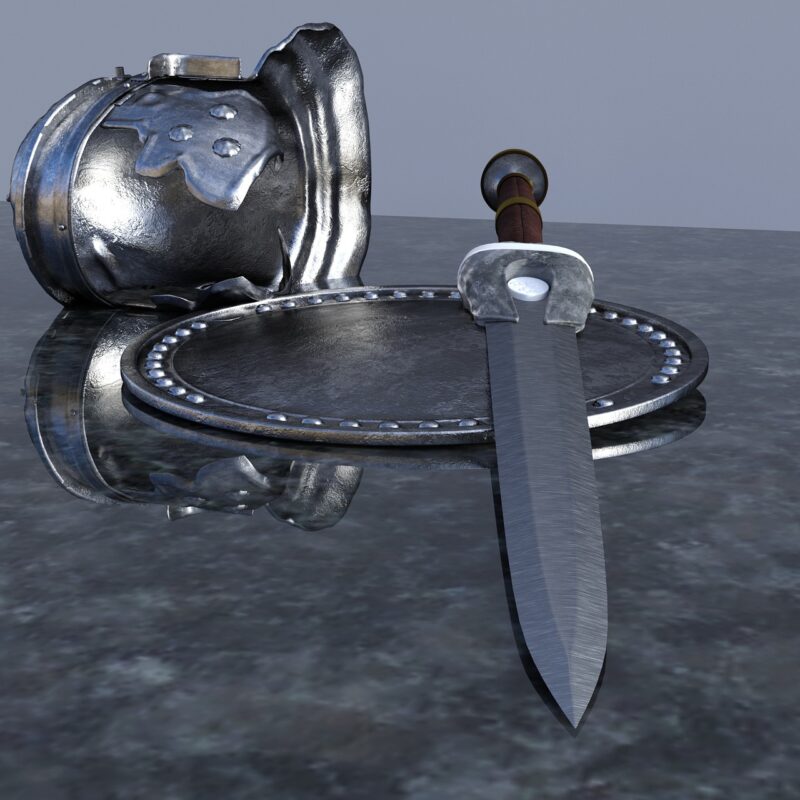Exploring the Most Fascinating Weaponry Throughout History: From Swords to Smart Bombs
November 19, 2024

Weaponry has played a pivotal role in shaping human history. From the primitive tools used by our ancestors to the advanced technologies of modern warfare, each era reflects the socio-political dynamics and technological advancements of its time. This article delves into some of the most fascinating weaponry from various historical periods, exploring their innovations, cultural significance, and the impact they’ve had on warfare and society.
1. The Early Days: Primitive Weapons
In the earliest days of human civilization, survival hinged on the ability to hunt and defend against predators. Tools like spears and clubs emerged as primitive weapons essential for hunting and protection. Made from readily available natural materials such as stone, wood, and bone, these weapons laid the foundation for future innovations.
- Spears: As one of the oldest weapons, spears are believed to date back over 400,000 years. Their design evolved over time, featuring sharpened stone tips to increase effectiveness in hunting and combat.
- Clubs and Bludgeons: Made from sturdy branches or stones, clubs were among the first hand-held weapons. They were simple yet effective for close combat and self-defense.
These early weapons not only symbolize humanity’s resourcefulness but also mark the beginning of our journey in mastering tools for combat.
2. The Age of Swords and Shields
As civilizations advanced, so did their weapons. The Bronze Age witnessed the rise of swords and shields, which became central to military strategies.
- Swords: The development of the sword marked a significant leap in weaponry. Known for their versatility and balance, swords became a symbol of power and prestige. From the Roman gladius to the Japanese katana, each culture produced unique designs that reflected their martial traditions.
- Shields: Essential for defense, shields evolved from simple circle shapes to diverse designs offering greater protection. The Roman scutum and the Viking round shield are examples highlighting the functional and artistic aspects of this weaponry.
Swords and shields became emblematic of the warrior class, symbolizing honor and skill in battle, and are still respected in martial arts and chivalry today.
3. Firearms and Gunpowder: A Game Changer
The introduction of gunpowder in the 9th century drastically transformed warfare, leading to the development of firearms.
- Muskets: By the 16th century, muskets replaced traditional weapons on the battlefield. Their use marked a shift from hand-to-hand combat to ranged engagements, changing military tactics forever.
- Cannons: Cannons revolutionized siege warfare. They enabled armies to breach fortified walls and changed the dynamics of territorial conflicts. The Battle of Crecy in 1346 showcased the devastating impact of artillery on the battlefield.
The age of firearms also brought about advancements in military strategy and tactics, influencing the outcome of wars and the way nations interacted.
4. The Industrial Revolution and Mechanized Warfare
The Industrial Revolution introduced mass production techniques, significantly impacting the development of weaponry in the 19th and 20th centuries.
- Machine Guns: The Gatling gun, and later machine guns, changed the face of warfare. Their ability to fire multiple rounds quickly made them formidable weapons in combat, exemplified during World War I.
- Artillery and Tanks: The use of mechanized artillery and tanks during World War I and II revolutionized ground warfare. Armored vehicles offered both offensive and defensive capabilities, leading to new strategies on the battlefield.
The mechanization of warfare not only elevated the scale of conflict but also deeply influenced the geopolitical landscape of the 20th century.
5. The Cold War and Nuclear Weapons
The Cold War brought about a new era of weaponry focused on deterrence rather than active conflict.
- Nuclear Weapons: The development of nuclear weapons fundamentally altered military strategy, introducing concepts like Mutually Assured Destruction (MAD). The fear of nuclear conflict during the Cold War influenced global politics and defense policies across nations.
- Intercontinental Ballistic Missiles (ICBMs): ICBMs allowed for long-range strategic strikes, representing a significant advancement in both offensive capabilities and deterrence strategies during the Cold War era.
This period demonstrated how weaponry could influence international relations, necessitating diplomatic efforts to mitigate the threat of nuclear war.
6. Modern Era: Smart Bombs and Cyber Warfare
The 21st century continues to witness rapid advancements in military technology, with innovations such as smart bombs and cyber warfare emerging as new frontiers in combat.
- Smart Bombs: Precision-guided munitions have redefined aerial bombardment, allowing for targeted strikes with minimized collateral damage. The Gulf War demonstrated the effectiveness of smart bombs, changing modern air power strategies.
- Cyber Warfare: In the age of information, cyber attacks represent a new dimension of warfare, where the battlefield extends into digital realms. Nations engage in cyber espionage and sabotage, redefining security and military operations.
These advancements reflect the ongoing evolution of weaponry and the complex nature of modern conflict.
Conclusion
The history of weaponry reveals mankind’s ingenuity and its impacts on society and geopolitics. From primitive tools to smart technologies, every era highlights the interplay between cultural evolution, technological advancement, and the human condition. Understanding this history not only informs our perspective on past conflicts but also raises critical discussions about the future of warfare and weaponry in an ever-changing world. As we continue to innovate, it is essential to ponder the ethical implications of our creations and strive for a more peaceful future.







